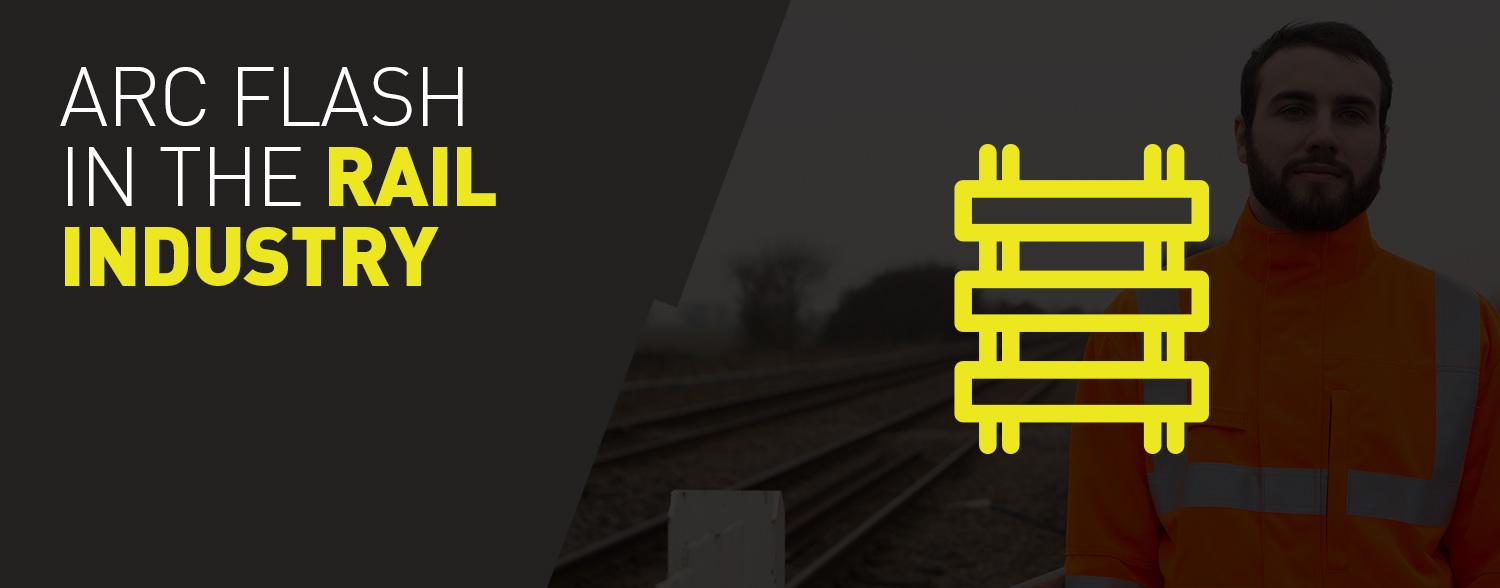
Arc Flash risks are becoming more widely recognised as a specific cause for concern to those working in the rail industry, over and above general electrical incidents, although there is still work to do on raising awareness of the Arc Flash risks in the rail industry.
An Arc Flash incident can occur any time people are working with electrical components. For the rail industry there are particular risks around working with electrical services and also when breaking ground.
What are the Arc Flash risks to the rail industry?
Clearly our electrified rail network means Arc Flash risks are prominent when carrying out maintenance. Any work on electrified lines or power cables should be risk-assessed and Arc Flash incidents considered.
Strapping tracks is another arc flash risk that could lead to an Arc Flash incident. And of particular concern, mainly because engineers have to work in such confined spaces, is that there are Arc Flash risks when carrying out maintenance of distribution panels, especially track-side.
How can workers be protected from Arc Flash risks?
ProGARM are Arc Flash specialists and have developed a range of products for the rail industry over and above our standard range.
For example, it’s likely an arc flash risk assessment for engineers working on distribution panels will require a helmet with visor and perhaps gloves, along with appropriately-rated clothing.
The Arc Flash risks of an incident on a distribution panel beside a railway track are increased because of the proximity of the worker to the panel and the confined space, meaning the potential energy from an incident could have even more catastrophic consequences.
What doesn’t seem to be widely recognised is the Arc Flash risk from breaking ground during track maintenance, laying new sleepers and cables, putting in new fencing or working close to electrified rails. In our 2017 research, 60% of those who were from the rail sector didn’t know the correct safety guidance for breaking ground (HSG47).
It’s conservatively estimated that around half of all services maps are wrong, so anyone digging or breaking ground could be at risk from a life-altering or life-threatening Arc Flash incident.
The following video shows the very real danger of breaking ground and striking an underground cable.
Our industry research tells us that in the rail industry, when breaking ground the fire risk is often carefully managed, but the Arc Flash risks are less well-known. See here for an explanation of the difference in the two types of protection.
ProGARM’s protective clothing is flame resistant as well as providing protection from Arc Flash incidents, so there’s no need to compromise, workers can be protected from both hazards.
Arc Flash risks solutions: especially for Rail
A wide range of our railway PPE is available in orange high viz, conforming to the new 2018 RIS railway spec.
All of our clothing is lightweight and breathable, ensuring worker comfort while also providing protection when workers are subject to Arc Flash risks. We use a variant of our VXS+ fabric which is tested to European standards, and all garments display an at-a-glance SafetyICON label so it’s easy to see what protection is offered. Read more on that here.
Our trousers and coveralls are available in male and female versions to ensure the best fit and maximum comfort. We have also designed waterproof salopettes, polo shirts and two jackets in the regulation orange high viz.
Two types of helmet with visor are available, depending on the voltage. See details here, and here.
Ask the experts
Our specialists can work with you to advise on the Arc Flash risks for your industry. Just give us a call on 01482 679600.
This is one post in a series ‘All about Arc Flash’. Continue reading the next in the series or return to the start if you like.